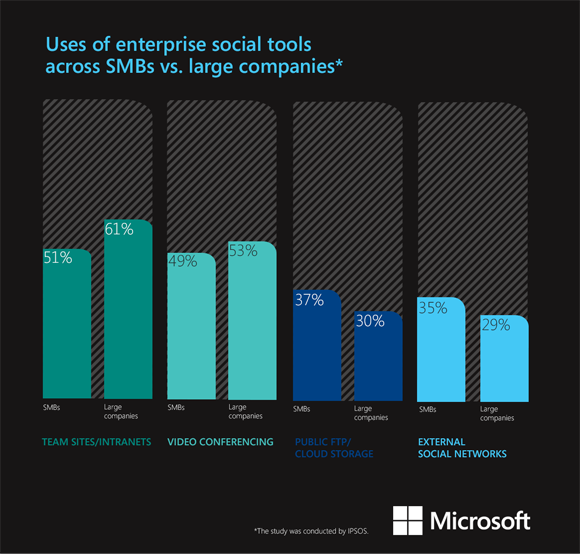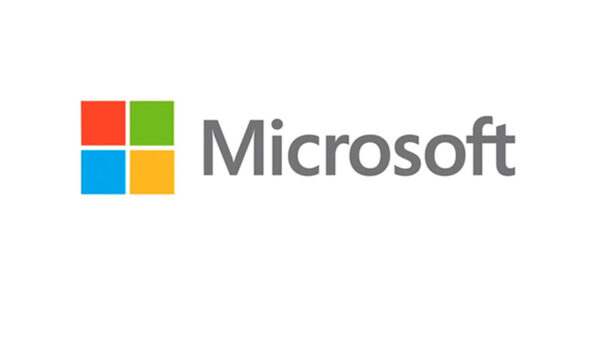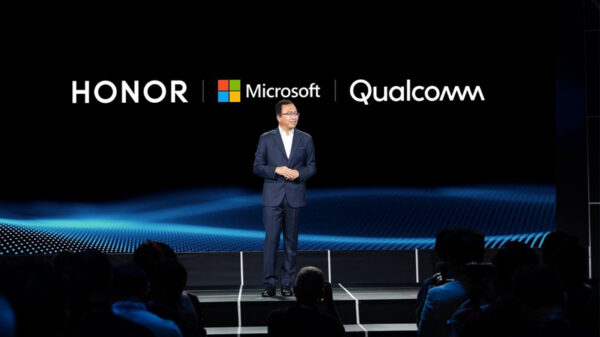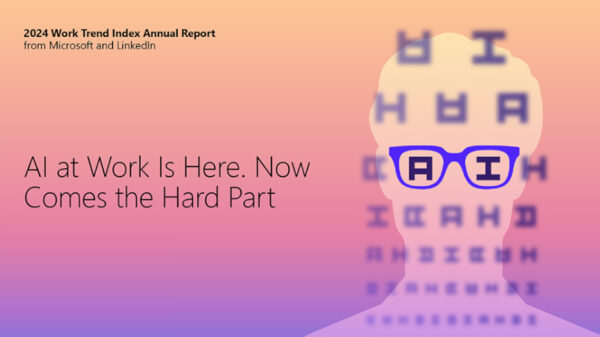Large companies and SMBs use business social tools — defined as technologies that enable business collaboration and communication, such as intranets, video conferencing and social networks — in dramatically different ways, leading to very different selling motions and partner opportunities, according to new research released by Microsoft Corp. at its annual partner conference.
The study, conducted by research firm Ipsos among nearly 10,000 end users at SMBs and large companies in 32 countries, found that, in addition to using solutions such as intranets and instant messaging services, SMBs are more likely to utilize multiple external social tools for professional purposes. Large companies, on the other hand, are more likely to deploy fewer, more prevalent collaboration tools.
“Social collaboration technologies represent a growing opportunity for partners with strong demand from end users at both large companies and SMBs,” said Jon Roskill, corporate vice president, Worldwide Partner Group, Microsoft. “However, each segment uses these technologies in different ways, with SMBs seeing public FTP/cloud storage, external social networks, blogging platforms while large companies clearly prefer intranets, team sites and videoconferencing. These differences represent huge opportunities for partners, and we’re committed to helping them capitalize on the potential in this space. We believe Microsoft has the expertise, the portfolio and the vision to make the future of workplace collaboration a reality.”
Although the top use for social tools in both large companies and SMBs is communicating with colleagues (selected by seven in 10 of all end users surveyed), those at smaller companies use social tools for a broader range of tasks, including communicating with customers, clients or vendors and researching customers, clients and competitors. In contrast, end users are large companies are more likely to use social tools for finding an expert of information within their company.
Barriers to adoption still exist across large companies and SMBs. For both groups, security concerns (71 percent of end users at large companies vs. 60 percent of SMB end users) and productivity loss (58 percent at large companies vs. 59 percent at SMBs) were identified as the top risks.
End users at large companies are more likely to say their IT department can be a barrier to using social tools (41 percent at large companies vs. 36 percent at SMBs).
Those at large companies are also more likely to say social tools are restricted at their workplace because of concerns about company image (27 percent vs. 21 percent at SMBs) or data loss (25 percent at large companies vs. 22 at SMBs).
“The consumerization of IT has changed the fundamental way in which businesses communicate, with enterprise social tools now following a ‘bring your own device’ model into the workplace,” said Rebecca Sizelove, associate vice president, Ipsos Public Affairs. “However, there are distinct differences between how SMBs and large companies adopt these tools, and technology decision-makers still require a certain amount of education around the benefits social tools can provide. This creates opportunities for technology vendors to educate and sell to businesses of all sizes.”














































































































